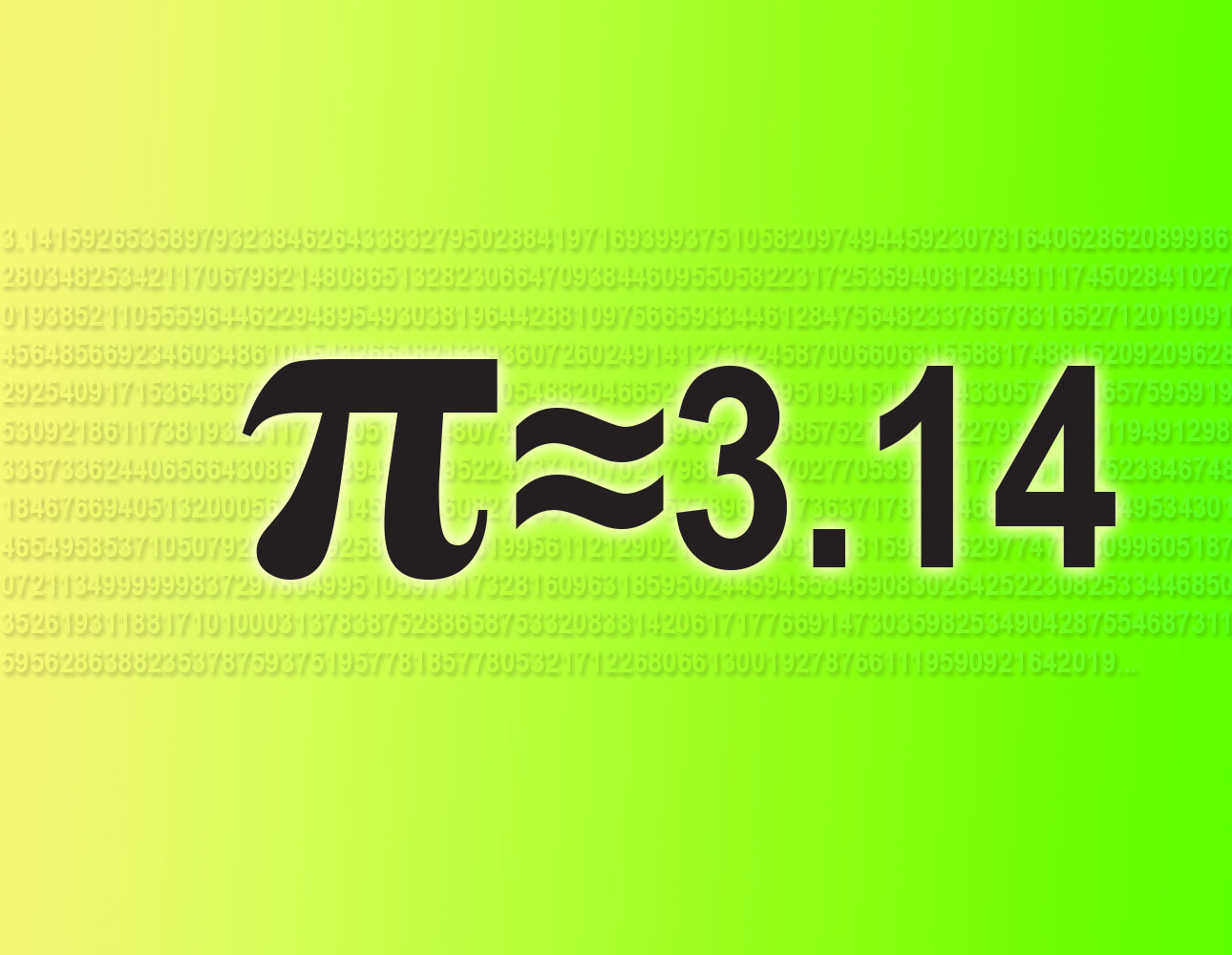
March 14, 2015 is the only day in any of our lifetimes that the date--3/14/15--will line up identically with the first four decimal places of pi--3.1415. In honor of everyone's favorite irrational number, here are some facts about pi you ought to know.
- Pi was named by German mathematician Leonhard Euler, although the earliest written approximations of pi are found in ancient Egypt and Babylon.
- In Babylon, a clay tablet dated to 1900–1600 BC imnplictly treats pi as 25/8, or 3.1250. In Egypt, a papyrus dated to about 1650 BC (but copied from a source from 1850 BC) describes a formula for the area of a circle that treats pi as (16/9)2, or 3.1605. Both of these approximations are within 1% of the actual value.
- A common approximation for pi is 22/7. It only differs from pi by four hundreths of a percent, making it good enough for most day-to-day uses.
- The digits of pi show no apparent pattern, and no sequence of digits appears to repeat more than any other.
- The first algorithm used to approximate pi comes from the ancient Greek scientist Archimedes, from around 250 BC. By 1650, mathematician Christopher Grienberger had computed 39 digits of pi, the most ever done with manual approximations.
- Coincidentally, 39 digits of pi--3.141592653589793238462643383279502884197--is as many digits as you need to describe the volume of the observable universe. At that point, the error between a sphere using this approximation and a sphere using a more accurate value of pi would be less than the size of a single atom.
- Mathematician Mike Keith wrote a short story called Cadaeic Cadenza, in which each word contained the same amount of letters as a digit of pi. Thus, 3.1415926535 became "One / A poem / A raven / Midnights so dreary, tired and weary." The story continues like that for 3834 words.
- The record for most digits of pi calculated was announced on October 8, 2014: 13,300,000,000,000. It took a computer 208 days to calculate.
- The digits of pi show no apparent pattern, and no sequence of digits appears to repeat more than any other. Unlike this list.